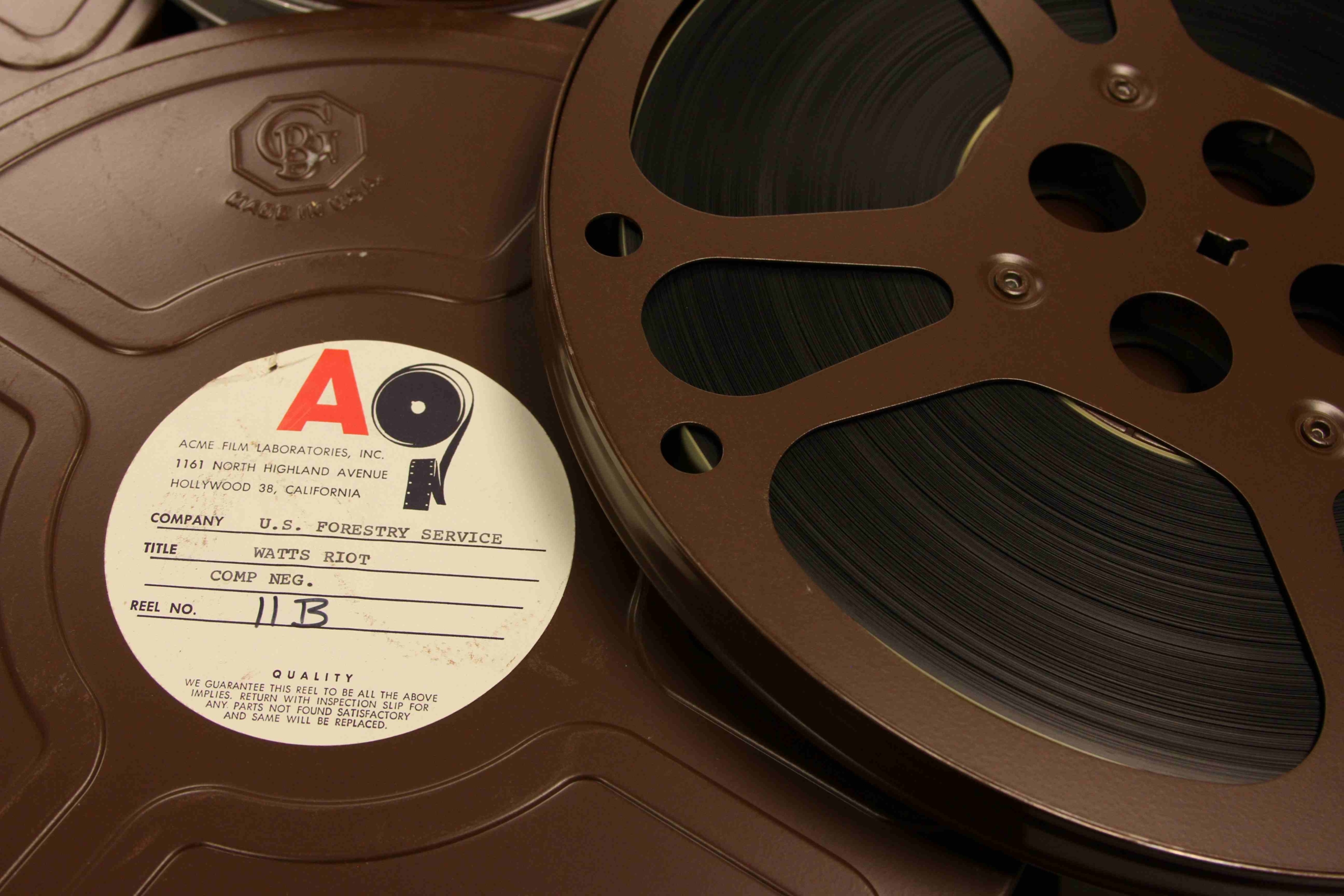The E.L. Quarantelli Resource Collection (ELQ) at the Disaster Research Center (University of Delaware) holds hundreds of thousands of items, including unique historic research data and other disaster-related documents and publications. Disaster researchers and emergency management practitioners alike can access academic and popular books, scholarly publications, research data, government reports, and objects representing decades of disaster-related study and practice.
Materials span from accounts of historical disasters like the 17th century Great Plague or the Great Irish Famine (mid-19th century) to documents about more recent “Big Ones” like the Northridge earthquake (1994), the 9/11 attacks (2001), or Hurricane Katrina (2005).
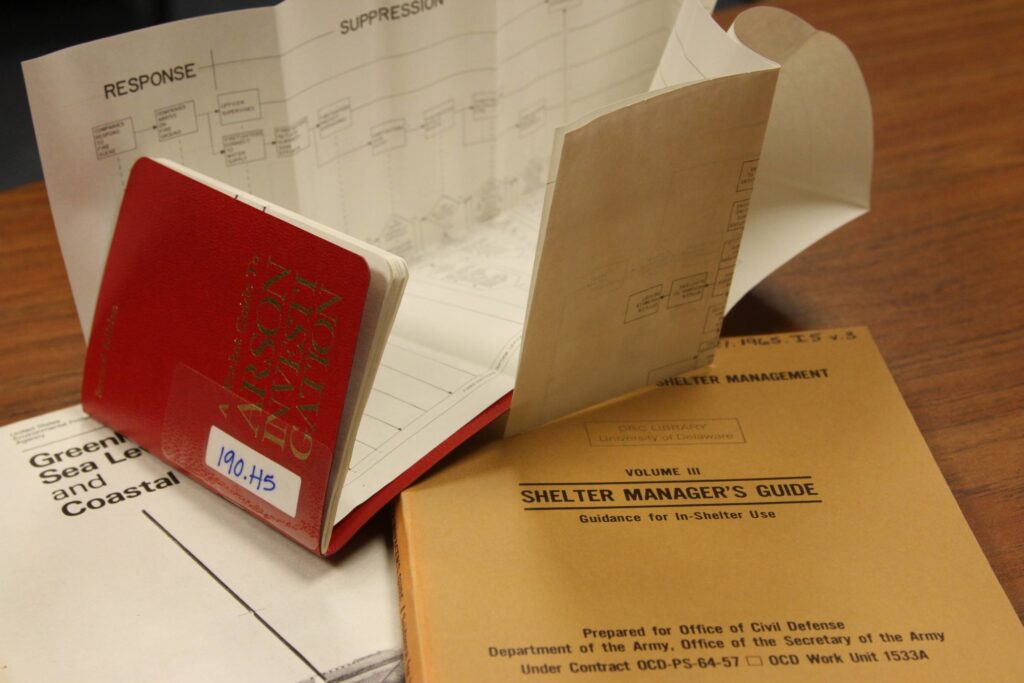
Various documents from historical disaster response plans and guides. Image courtesy of Disaster Research Center (University of Delaware).
A Collections Assessment for Preservation Project
Some parts of the collection have assumed new relevance over the last few years, allowing us to look at today’s social unrest and racial reckoning in the larger context of the fight for civil rights in the 1960s. These holdings were prioritized for conservation measures to guarantee long-term preservation and accessibility.
In particular, we wanted to make sure the 16-mm reel tapes with footage from the Watts Riots, some of which may be unique copies, were preserved and stored adequately, allowing us to make them more accessible.
These video tapes document several days of civil unrest, following an incident of police brutality in Los Angeles in August 1965.

Watt Riots tape labelled “Hell in the City of Angels”. Image courtesy of Disaster Research Center (University of Delaware).
Given the age of the tapes and the fact that they are stored in a controlled environment, but not under material-specific ideal conditions, we had concerns about degradation and potential loss of invaluable historical documents. In addition to the Watts Riots tapes, we wanted to cursorily assess other types of AV media including Betamax tapes, microfilm, magnetic audio tape and a computer reel.
The Institutional Context
The ELQ Resource Collection is situated within the larger system of the University of Delaware, a fact that can both further and hinder our work: complex institutional interdependency led to a significant delay in the start of the Watts Riots preservation project due to long university processes and strict separation of duties and competencies that slow down improvement of collection condition as well as the working environment for staff and researchers.
There are challenges to working within a larger institution, such as collection staff not having control over environmental conditions, as the HVAC system is under the purview of university facilities, limited collection space, and slow reactions to change.
However, university resources for archival storage and digitization, as well as the connection to the Winterthur/ UD program in Art Conservation, are helpful in achieving the collection’s mission. Space constraints make the use of a climate-controlled offsite storage facility necessary, although collection staff do not have any influence over these settings.
The Assessment
Thanks to the Conserv Preventive Conservation Award, in April 2023, we were able to hire a preventive conservator to perform an assessment of a portion of our historically significant AV materials. Assessment Day started in the off-site storage unit, the “Annex”, where the 39 tapes are currently stored with other archival materials in a secure and climate-controlled environment.
Staff met with Margalit Schindler, preventive conservator in private practice (Pearl Preservation), to look at the reels in the space in which they are typically stored. They are positioned close to the entrance for easy access in case of an emergency.
Recently, the tapes had been put in plastic tubs adding a layer of protection against the threat from sprinklers above the shelving, but potentially increasing risk of trapping degradation pollutants inside the boxes.
In addition to these tapes, the Annex holds books and other paper-based materials, newspaper clippings, audio recordings, and duplicates.

“Annex” storage space. Image courtesy of Disaster Research Center (University of Delaware).
We transported the reels to the Disaster Research Center to examine them on a clean and well-lit work surface and to discuss our concerns and the issues that the conservator would identify.
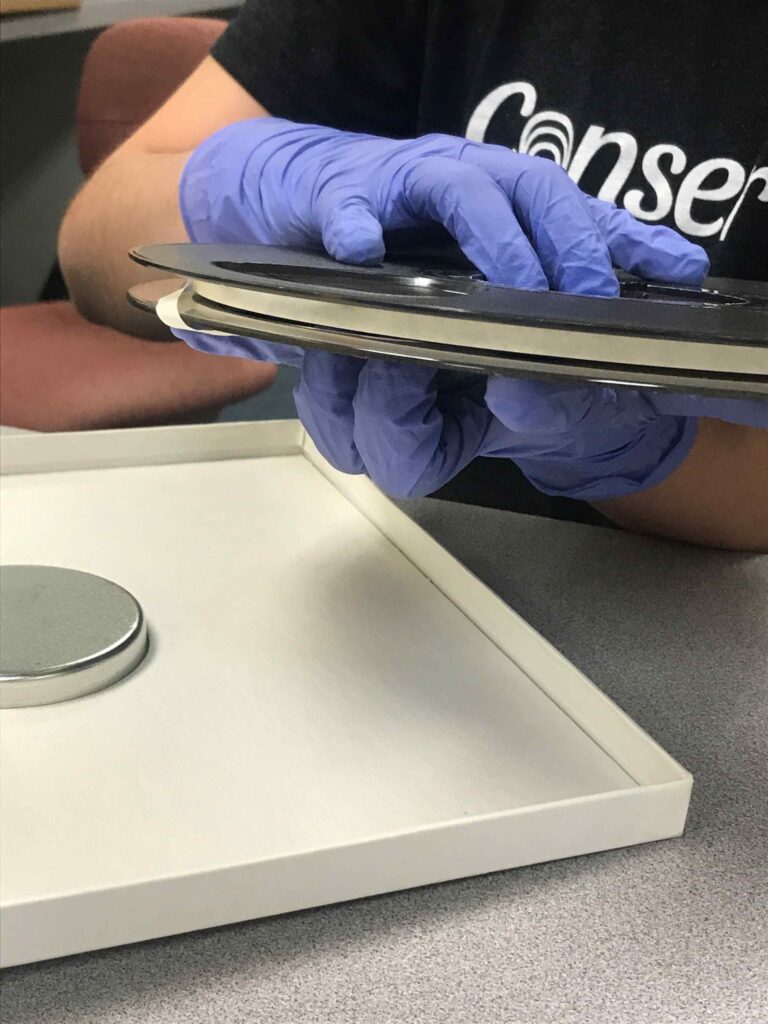
The collections assessment for preservation under way. Image courtesy of Disaster Research Center (University of Delaware).
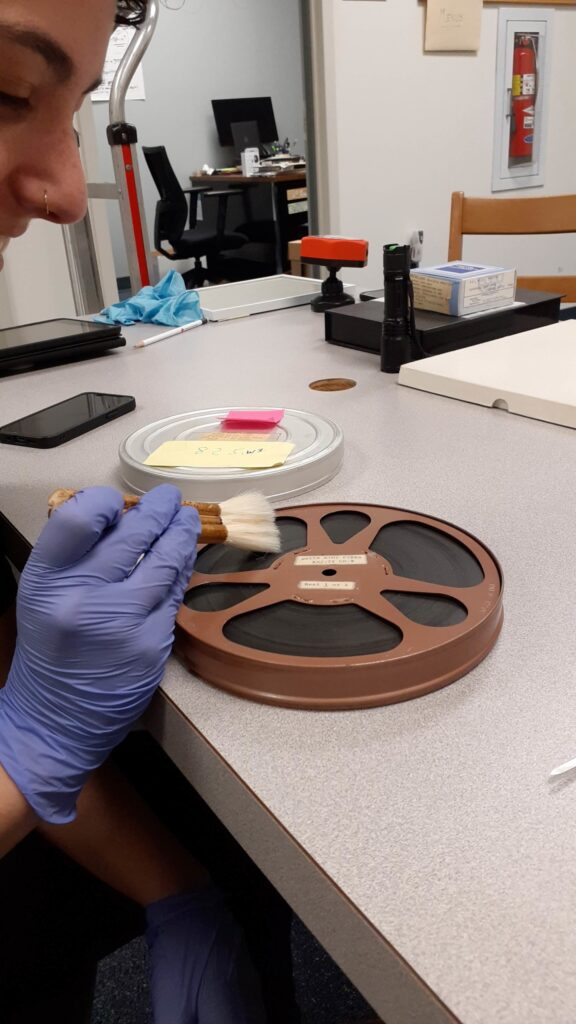
Surface cleaning reels. Image courtesy of Disaster Research Center (University of Delaware).
Upon opening the plastic tubs, we experienced a well-documented phenomenon: a strong smell of vinegar, indicating that the cellulose acetate film carrier is actively degrading.
We also identified additional points of concern:
- Damaged metal cans which could potentially impact the tapes due to flaking of paint or rust and risk of chemical reaction.
- Unraveled and warped tapes causing physical damage.
- Insufficient labeling and descriptions on some tapes increasing the risk of disassociation.
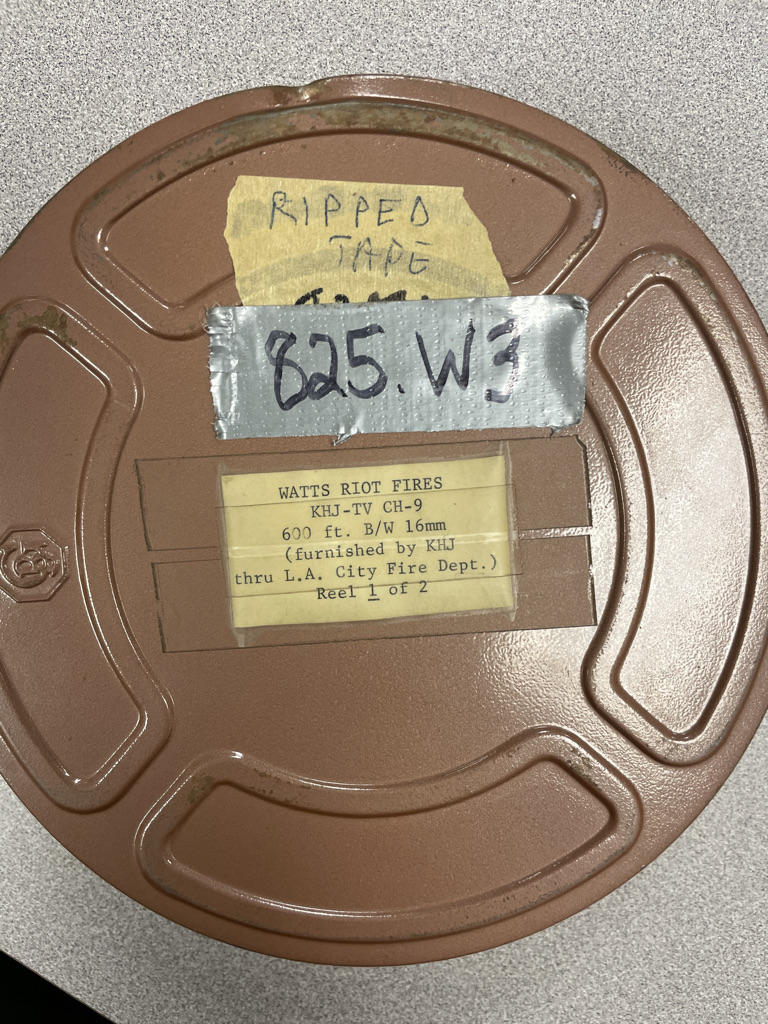
Dented reel can. Image courtesy of Disaster Research Center (University of Delaware).
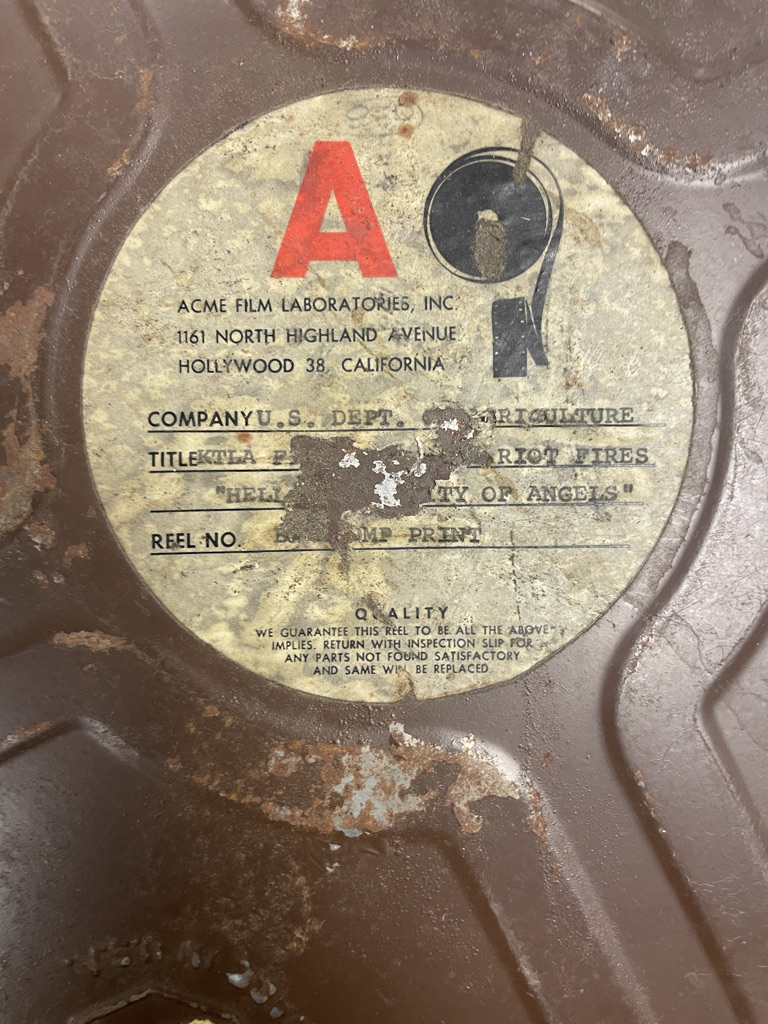
Rust and flaking damaging the original tape label. Image courtesy of Disaster Research Center (University of Delaware).
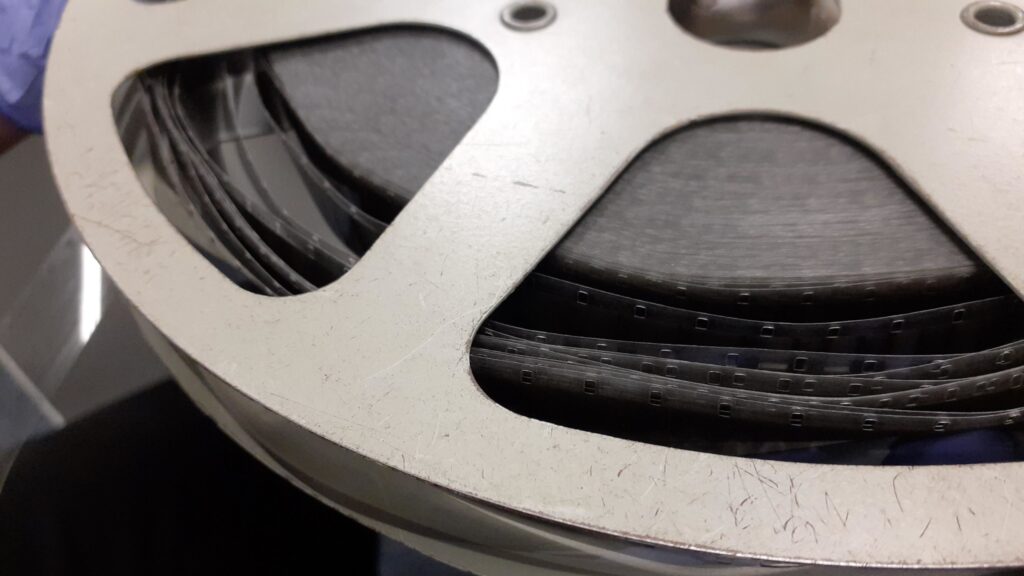
Unravelling tape. Image courtesy of Disaster Research Center (University of Delaware).
Collection staff had inventoried the tapes in preparation of the assessment and discovered that many were not recorded in the online catalog or the archival records.
With the additional information we gained from the assessment, we will be able to update and enrich the catalog records and container lists, ensuring discoverability and accessibility for researchers.
We will have to decide whether to store negatives and prints together or separately, and whether to keep all tapes after digitization or deaccession some to account for the limited space.
After inspection of each reel, some surface cleaning where necessary, and documentation of all issues, we moved to discuss recommendations for treatment and storage, as well as more general questions regarding Collection Management and ideas for shared use of resources, considering the ELQ’s place within the larger University of Delaware.
Overall, the tapes were in good/fair condition but at risk of degradation without the steps the conservator recommended.
We picked the right time for the assessment, allowing intervention before significant damage can occur to these unique holdings.
Since the assessment, we have already had a chance to act on some of the recommendations and learned additional information about these materials:
Putting A-D strips into the film canisters, we could see significant acidity in some of the cans and we learned that the Prints are in more dire need of intervention than the Negatives.
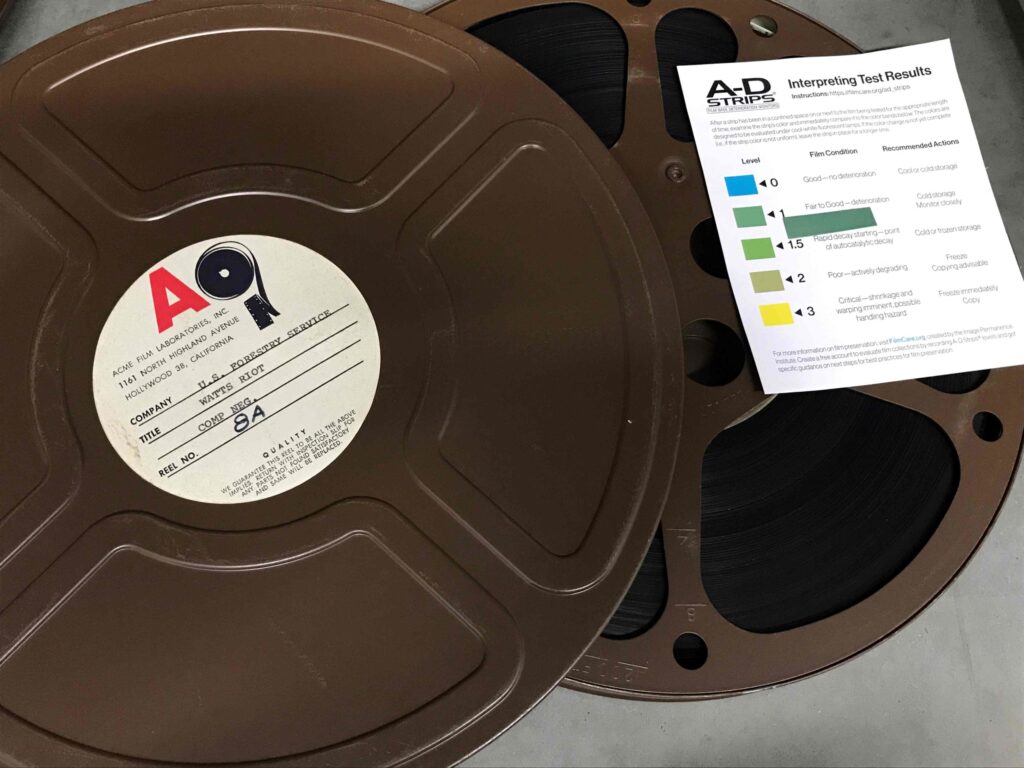
During the collections assessment, some reels showed a 1 in A-D strips indicating close monitoring. Image courtesy of Disaster Research Center (University of Delaware).
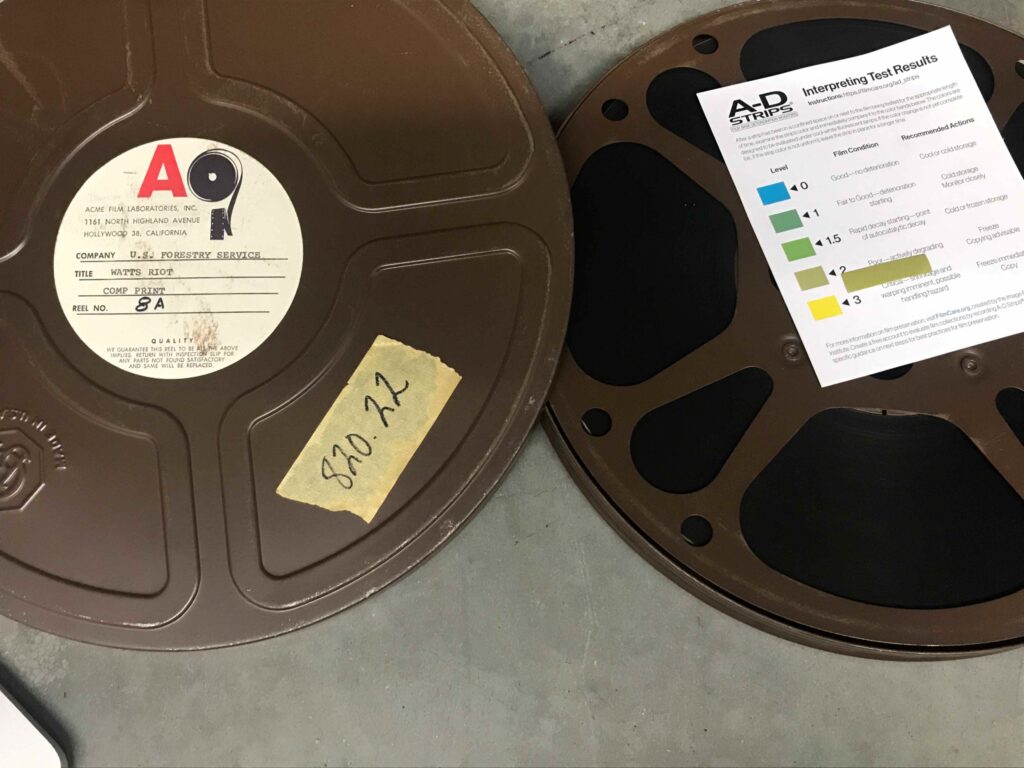
Watts Riot film reel with A-D strips to check for degradation. Image courtesy of Disaster Research Center (University of Delaware).
We also had a chance to view a first batch of tapes at the University’s Student Media Design Center and found that the overall quality of both image and sound were very good, apart from some minor issues that might be solved by cleaning the tapes – a service that is available through the university library at no cost.
This project provided us with an opportunity to assess both the physical integrity of our materials and the record-keeping and control over our holdings, ensuring discoverability, access, and use.
By improving storage conditions (monitoring, cold storage, small repairs) and working towards a larger digitization project, we will ideally be able to preserve these tapes in their current state and provide digital access for researchers.
Additionally, we hope that the report and the improvements that come from this collections assessment for preservation will lead to further awareness regarding the importance of preventive conservation, allowing us to plan future related projects and apply for additional funding in the future.
The Recommendations
Short-Term Goals/Immediate Action
✅ = done!
- ✅ Monitor (AD strips) and sequester (plastic bins), to control the presence of acidity and limit impact on other materials.
- ✅ Use a pencil to label the reel itself (on the A side, the one with the length-indicator), in case it ever gets separated from the canister.
- ✅ Quantify the reels (linear feet/ cubic feet/ total weight). This information will be necessary for considerations regarding future storage and digitization.
- Consider storing film reels separately from other collection objects.
- Secure unraveled tape by cutting 16mm strips of acid-free paper, rolling tape up tight again and tape.
Long-Term Goals
- ✅ Consider replacing the damaged metal canisters with plastic replicas or vintage.
- ✅ Contact the library’s Student Multimedia Design Center, to learn about their storage practice for AV materials and to use their equipment for viewing the Watts Riots tapes.
- ✅ Contact the university’s central library and their Special Collections team, to discuss potential collaboration or shared use of equipment for digitization.
- Apply for funding to digitize Watts film reels (e.g., NEH).
- Consider a case freezer on site at DRC for in-house cold storage of priority objects.
- Find a Cataloging software that meets current needs AND can grow as the ELQ collection continues to expand.
- Develop a Collection Management Policy that documents all the institutional knowledge shared by current staff (three people), in particular regarding the true locations and scope of the collection.
If you have any questions about environmental monitoring, integrated pest management, or just want to talk about preventative conservation, please reach out to us! Don’t forget to check out our blog or join our community of collections care professionals where you can discuss hot topics, connect with other conservators or even take a course to get familiar with the Conserv platform.

